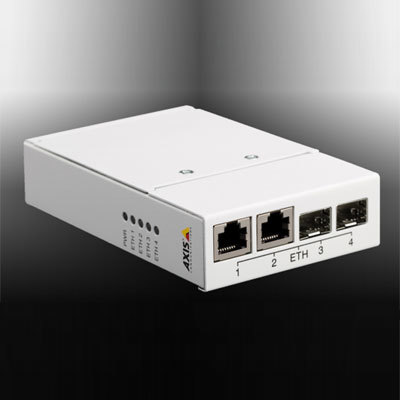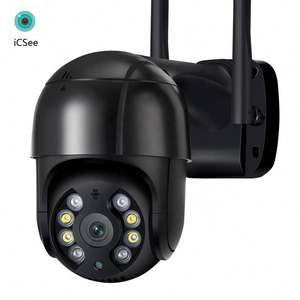Protect Your Property Efficiently with an State-of-the-Art Fence Detection System Technology
Protect Your Property Efficiently with an State-of-the-Art Fence Detection System Technology
Blog Article
Exactly How CCTV Cameras With Fiber Optic Result Improve Long-Distance Monitoring
CCTV cameras geared up with fiber optic output stand for a considerable improvement in long-distance surveillance innovation, supplying unparalleled advantages over standard systems. By leveraging the properties of light transmission via fiber optics, these cameras make certain high-def video clip quality continues to be undamaged throughout extensive ranges while efficiently minimizing electro-magnetic disturbance - cctv fibre optic cable.

Comprehending Fiber Optic Modern Technology
Fiber optic technology is significantly utilized in long-distance surveillance applications due to its outstanding capability for data transmission. This innovation uses thin strands of glass or plastic fibers to send information as light signals, considerably reducing the attenuation frequently connected with standard copper wires. The fundamental buildings of optical fiber permit the transmission of large volumes of information over significant distances without loss of high quality, making it an excellent choice for applications requiring trustworthy communication.
The concept of overall inner representation helps with the reliable transmission of light within the fiber, making certain high data transfer and rate. Unlike electric signals in metal cords, fiber optics are unsusceptible to electromagnetic disturbance, improving the honesty of information transmission. This characteristic is especially beneficial in environments with high degrees of electric sound, such as commercial setups or urban areas.
In addition, fiber optic cables are lighter and a lot more flexible than their copper equivalents, which streamlines setup and decreases structural lots. With their longevity and resistance to environmental factors, optical fiber are well-suited for exterior applications, thereby expanding the reach of monitoring systems. Therefore, fiber optic innovation is becoming a foundation in contemporary surveillance remedies, efficiently dealing with the challenges of long-distance surveillance.
Benefits of Fiber Optic CCTV
Making use of fiber optic technology in CCTV systems offers many benefits that improve security capacities. One of the primary benefits is the ability to transfer high-definition video over fars away without significant signal destruction. Unlike conventional copper cable televisions, optical fiber can keep video high quality over comprehensive runs, making them suitable for big buildings or remote monitoring areas.
Additionally, fiber optic cords are less vulnerable to electro-magnetic disturbance, which can misshape signals in conventional systems. This ensures more clear photos and continuous solution, crucial for safety surveillance. Fiber optics are inherently much more protected, as obstructing signals needs customized tools, therefore offering an added layer of security versus unapproved access.
The lightweight and small nature of fiber optic wires additionally simplifies installation, making it possible for much easier routing via tight rooms and minimizing overall labor prices. Their resilience makes them resistant to environmental elements such as dampness and temperature variations, expanding the life expectancy of the security system.
Lastly, fiber optic systems can sustain a greater number of video cameras on a single network, enhancing sources and providing scalability for future growth. These benefits make fiber optic CCTV systems a superior option for contemporary surveillance demands.
Comparison With Typical Systems
When contrasting CCTV systems, traditional configurations frequently drop brief in a number of key areas, specifically in terms of distance and signal honesty. Traditional coax systems commonly face significant signal deterioration over lengthy distances, restricting reliable monitoring ranges to roughly 300 feet (cctv fibre optic cable). Beyond this threshold, photo quality reduces, leading to prospective blind spots and lowered security efficiency
On the other hand, fiber optic systems keep signal stability over a lot greater ranges, usually going beyond a number of miles without loss of quality. This is largely because of their capability to transmit information as light signals, which are much less susceptible to electromagnetic disturbance than electric signals used in traditional systems.
In addition, traditional systems require a lot more extensive maintenance and troubleshooting due to their susceptability to environmental factors such as wetness and electromagnetic noise. Fiber optic systems, alternatively, deal boosted longevity and lower maintenance costs, as they are less vulnerable to damages.
Applications in Long-Distance Surveillance
The benefits of modern-day CCTV systems in keeping signal stability over long ranges open a wide variety of applications for long-distance tracking. One significant application remains in metropolitan security, where districts release fiber optic CCTV systems to keep track of public spaces, improving safety and security and hindering criminal task. These systems offer continuous, premium video feeds that are critical for effective police and emergency response.
Another crucial application is in industrial settings, where remote surveillance of manufacturing procedures and harmful locations is essential. Fiber optic CCTV can stand up to severe settings and send information over long ranges without loss of quality, permitting real-time oversight and decreasing dangers to workers.
Furthermore, critical facilities such as airport terminals, trains, and pipes benefit from long-distance CCTV tracking. Security groups can look visit this site right here after big areas from streamlined control rooms, making sure quick response to any kind of cases.
Moreover, in farming settings, farmers utilize long-distance CCTV to check crops and animals, assisting to boost productivity and security. Generally, the adaptability and dependability of fiber optic CCTV systems make them important across various sectors, allowing comprehensive security remedies tailored to details requirements.
Future Fads in Security Innovation
Just how will advancements in innovation improve the landscape of monitoring? The future of surveillance innovation is positioned for have a peek at these guys significant makeover, driven by advancements such as man-made intelligence (AI), artificial intelligence, and side computer. These modern technologies allow real-time information analysis, permitting quick identification of possible hazards and boosted situational awareness.
AI-powered analytics will enhance the precision of face recognition systems, decreasing incorrect positives and making it possible for a lot more effective monitoring of individuals. The integration of Web of Points (IoT) gadgets will certainly facilitate a seamless network of interconnected security systems, improving monitoring abilities throughout large areas.
One more pattern is the change in the direction of cloud-based storage space services, which use scalable data administration and ease of access. This will certainly permit companies to keep huge quantities of video clip information without the restrictions of physical storage space, while ensuring that details is quickly retrievable.

Final Thought
To conclude, CCTV cameras geared up with fiber optic result stand for a considerable improvement in long-distance surveillance capacities. The use of fiber optic technology guarantees high-def video transmission over extensive ranges without high quality deterioration, while also content giving resistance to electromagnetic disturbance. The lightweight and adaptable nature of these systems facilitates structured setup and resource optimization. As surveillance modern technology continues to advance, the fostering of fiber optic solutions will likely play a crucial function in boosting security throughout diverse applications.
Report this page